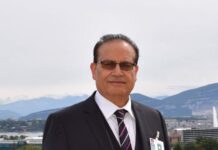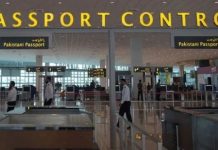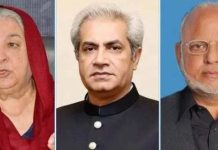Muhammad Abdullah & Maria Ali
World Car-Free Day is observed annually on September 22 in cities all around the world, encouraging drivers to give up their cars for the day. The event draws attention to the many advantages of going car free to urban residents, including less air pollution and the encouragement of walking and cycling in a safer environment. But is this possible in our cities especially in Islamabad, to celebrate car-free day? Is it possible for us to avoid using our vehicle on this car free day?
Islamabad—A city of cars. If you are a car, it is a great place to live. This lovely city is losing its allure, natural beauty, and peacefulness with each passing day. Islamabad, which was once renowned for its calm evenings and minimal traffic flow, is currently coping with the problem of growing vehicular traffic density. The general atmosphere of this metropolis is suffering greatly as a result of the increased traffic.
With its population reaching almost 2.5 million people and the number of registered vehicles crossing 1.3 million, Islamabad is becoming a hard city to live interms of mobility. Our capital is widening its highways to accommodate more vehicles at a time when contemporary cities like Singapore and Oslo are waging a war against cars. Everyone is aware of the fact that an increase in the number of cars on the road results in an increase in traffic accidents, which cost the lives of tens of thousands of people annually around the globe. According to the Global Status Report on Road Safety 2013, by the World Health Organization (WHO) road accidents will become the fifth major cause of deaths by 2030. Several factors contribute to the disturbing picture projected by our roadways when it comes to traffic.Law-abiding and sensible commuters are frequently at danger of accidents as a result of ruthless bikers’ excessive speeds, frequent lane changes, wrong overtaking, and zigzagging. It has gotten worse in recent years with the growing vehicular traffic density.
Whenever we discuss the issues related to cars and transportation, we frequently highlight fatal accidents, air pollution, or traffic congestion. We don’t often think about how much space cars actually occupy in our cities. Instead of moving towards vertical expansion of our cities, authorities are leaning more towards massive horizontal expansion providing a way for expansion of road infrastructure. More expansion, more cars, more pollution, hence more problems.The existing conditions demand an approach which will change people behavior to use private cars. There will be fewer cars on the road if more people use public transportation.
In order to promote people to use cars less and public transport more we need a world class efficient public transport with maximum accessibility. Inthe capital city, there is currently no such type of public bus service. Rawalpindi-Islamabad Metro bus serves Islamabad and its twin city, Rawalpindi. However, there is one approved route for the metro bus service and it does not yet extend throughout the entire city. Office workers, students, and other commuters use private transportation because the capital has no reliable public transportation outside of the metro bus service that connects the twin cities. Moreover, an outdated network of privately operated wagons also makes up the current form of public transportation. These wagons are not subject to any government regulations or maintenance requirements. Only a few routes are serviced by the wagons, and the fee is not negotiable.In this case, a proactive strategy by the authorities is essential for ensuring the regulation of existing public transportation modalities.
Road congestion may never be completely eliminated by government, but there are a number of steps cities and states may do to reduce it. Contemporary conditions of the Islamabad’s roads are becoming worse due to heavy traffic. There is no room for a three foot wide cycling lane but there is a room for eight foot parking bays on both side of the street in the capital. Now it’s high time to redesign our city for people, not for cars. Such initiatives that will aid in lowering the number of vehicles on the road must be started. Additionally, laws that discourage local residents to use cars can be put in place, like providing incentives to shift people from their own cars into public transport and like prohibition on free parking. We need to invest more on expanding public transit capacity, footpaths and, cycling lanes. This can help us in saving environment, fuel import and economic loss due to mobility barriers.

















